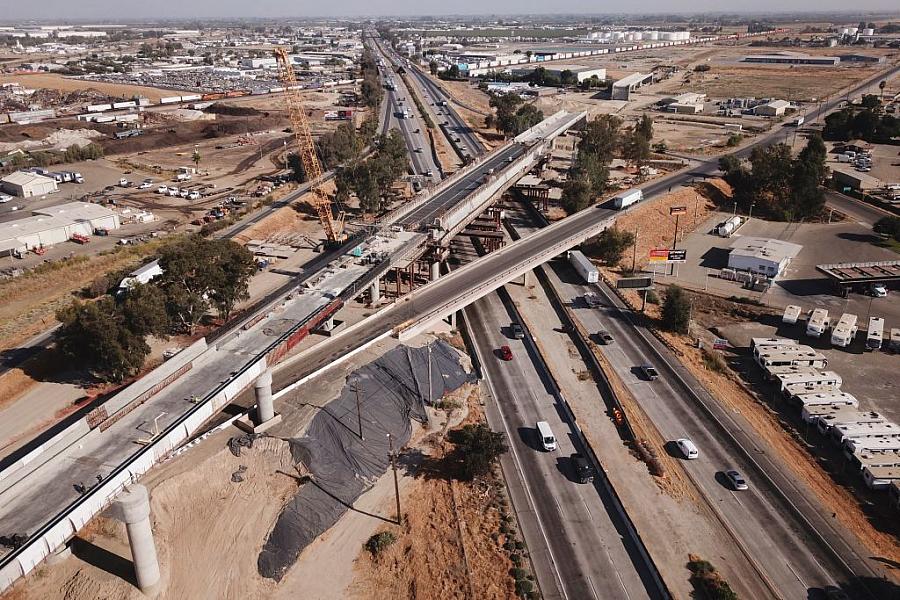Truck emissions are hurting South Fresno. What’s the remedy?

(Photo by Patrick T. Fallon/AFP via Getty Images)
The San Joaquin Valley region for decades has ranked among the worst areas in the country for air quality, with some communities experiencing some of the highest rates of asthma in California. The neighborhoods most burdened with the health costs of environmental pollution are primarily Black and Latino
That’s certainly felt by residents of South Fresno, who recently watched the neighborhood become home to distribution warehouses with idling diesel trucks that add more particulate matter to the thick smoggy haze from nearby highways.
With support from the Center for Health Journalism 2022 California Impact Fund, I am partnering with The Fresno Bee, the local NBC/CBS affiliate and Valley Public Radio to produce three investigative series about air quality issues in the valley. Our primary investigation is focused on warehouse emissions and potential solutions in South Fresno.
The boom of local truck traffic contributes to longstanding environmental burdens already facing this diverse neighborhood. Once a thriving Black neighborhood, the area was spliced by highways and economically crippled by redlining. Now, residents there are among the most overburdened by environmental pollution in all of California, according to the CalEnviroScreen 4.0, a tool that measures high rates of asthma, low birthweight, poverty and unemployment.
The city of Fresno continues to allow new warehouses to be built nearby, and the local air district has left any regulation of the related emissions to state and federal agencies.
There are proposed solutions.
Local community leaders for years have lobbied for improved land use decisions by city officials. Other community members are looking to reroute truck traffic to steer air emissions away from their backyard.
Regulation might also be possible. Following grassroots organizing efforts, the South Coast Air Quality Management District recently adopted new health-protective rules for warehouses in Los Angeles County, creating a regulatory model that could be used by the San Joaquin Valley Air District to control emissions.
And, the Valley Air district is currently looking at technological solutions, recently announcing it accepted $36.5 million in state funding to deploy 100 zero-emission trucks in the Valley.
Our reporting team plans to use engagement reporting techniques and data analysis along with a solutions journalism approach to investigate this issue and report our findings. We plan to collect and compare air quality monitoring data with geographical data for distribution warehouses to analyze the correlation to the extent possible. And, we’re committed to engagement journalism techniques that involve impacted community members in the reporting process.
That means we’re meeting from local leaders to hear what reporting would be most helpful and we plan to conduct outreach to hear from residents about their health experiences and to gather their questions about the issue, which will guide our reporting.
Finally, we look forward to taking a critical lens to the proposed solutions to consider what might work here and where solutions may fall short from truly protecting public health. We’ll look at the limitations and possibilities for proposed remedies.
Ultimately, we hope this project will produce journalism that can guide public policy, empower local residents with information, and meaningfully contribute to the conversation to improve residents’ health.

